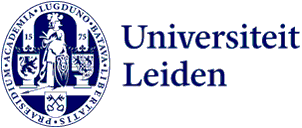
European grant for research into Indian scriptures: ‘This is what our understanding of Hinduism is based on’
Professor Peter Bisschop has been awarded an ERC Advanced Grant. He will invest the 2.5 million euros in his research into puranas: ancient texts, commonly written in Sanskrit, that are up to fifteen hundred years old.

‘Dutch people are generally well informed about the European classics, but we are wholly unfamiliar with Indian classical cultural history,’ Bisschop explains. In the next few years, he will focus solely on puranas: anonymous texts about the mythical cycles of important Hindu gods. ‘These writings could be seen as a form of pre-modern Wikipedia,’ he says. ‘Even though there are also highly original puranas, the genre is well known for the recycling of any information that ends up in these texts.’
Malleable texts
While the first puranas date back to the fifth century AD, new versions continue to appear even today. ‘They have shaped the very fibre of Indian culture,’ Bisschop says. ‘These are the stories you grow up with as a child and the ones that are intertwined with religious practice. When you visit a temple, the purana will explain why the temple is in the exact spot it is. It’s comparable to the function of myths in our culture.'
And also similar to myths, the texts of puranas can be unstable. ‘If you were to compare quotes from the tenth century to more contemporary editions, for example, the contents can be wildly different,’ says Bisschop. ‘One of the most important points I argue is that the texts have been changed and adapted constantly, depending on the people who transmit them and where they are located.’
Mirror of development
It is precisely these changes that make the genre interesting, because they make it possible to clearly map the cultural formation of India and its neighbouring countries. Bisschop does this with the help of three questions: When were the texts compiled? How have they been handed down? And how do they function in and outside India, once they have been translated into local languages?
With the answers to these questions, he hopes to shed new light on the cultural and religious formation of South and Southeast Asia. ‘If we answer the question of what role the puranas played in storytelling, we can learn more about the Hindu teachings that were disseminated with their help. Once we uncover that, we can start concentrating on the question of which religious groups may have played a role and what happened in which parts of Asia.’
Looked down on
Bisschop is of the opinion that the puranas had enormous influence. ‘I have a theory that our understanding of Hinduism is based on the puranas, only it has never been acknowledged as such.’
I would like to show that puranas are a very original type of literature.
One of the biggest reasons behind this lack of acknowledgment, according to Bisschop, is their image. For a long time, Sanskritists were more preoccupied with what was considered to be the most elevated form of Sanskrit, such as poetry or science. The puranas were looked down on. Their Sanskrit was considered second-rate and their contents unoriginal. ‘I would like to show that this type of literature is quite unique and I would even go as far as to consider it world literature, given that it has had a wide reach over an immensely long time period. Without it, it would be hard to speak of South and South-East Asian classics at all.’
